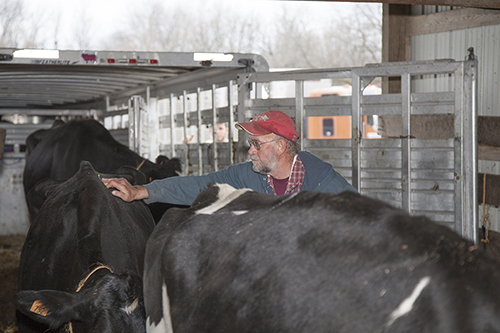
Several swollen hocks or neck abscesses might tell us that our stalls need more bedding or our neck rail height needs to be adjusted. Similarly, bruises on a carcass can reveal a lot about welfare once an animal is sent to slaughter.
"Bruises tell a story," said Lily Edwards-Callaway from JBS, a well-known meat processing company. She spoke at the UW-Extension Dairy Well-being Conference last week in Eau Claire, Wis.
For any packing plant, bruising slows productivity, as that damaged meat needs to be cut away from the carcass. Bruising also creates wasted product and can lower financial returns for both the producer and the packing plant.
Studying the size, shape, location and timing of a bruise, however, can be useful in identifying areas where animal care can potentially be improved, explained Edwards-Callaway. In fact, JBS recently did their own investigation, taking a closer look at bruises on carcasses. This data helped them better understand where injuries are occurring.
Bruising can happen at their slaughter plants, and changes can be made to minimize injury and improve animal well-being. Many bruises, though, happen before an animal enters their facilities. These injuries may be occurring on the farm or during the loading or transportation process.
To be part of the solution, farms should reduce the potential for bruises by dehorning, removing sharp edges or broken objects in facilities and transportation equipment, and using proper cattle handling techniques at all times.
"Bruising is an outcome we can use to assess our system to continuously improve animal welfare," she said. For farms, livestock truckers and packing plants alike, this is a great philosophy to embrace to limit injuries and enhance animal well-being at all stages of life.
 The author is an associate editor and covers animal health, dairy housing and equipment, and nutrient management. She grew up on a dairy farm near Plymouth, Wis., and previously served as a University of Wisconsin agricultural extension agent. She received a master's degree from North Carolina State University and a bachelor's from University of Wisconsin-Madison.
The author is an associate editor and covers animal health, dairy housing and equipment, and nutrient management. She grew up on a dairy farm near Plymouth, Wis., and previously served as a University of Wisconsin agricultural extension agent. She received a master's degree from North Carolina State University and a bachelor's from University of Wisconsin-Madison.








